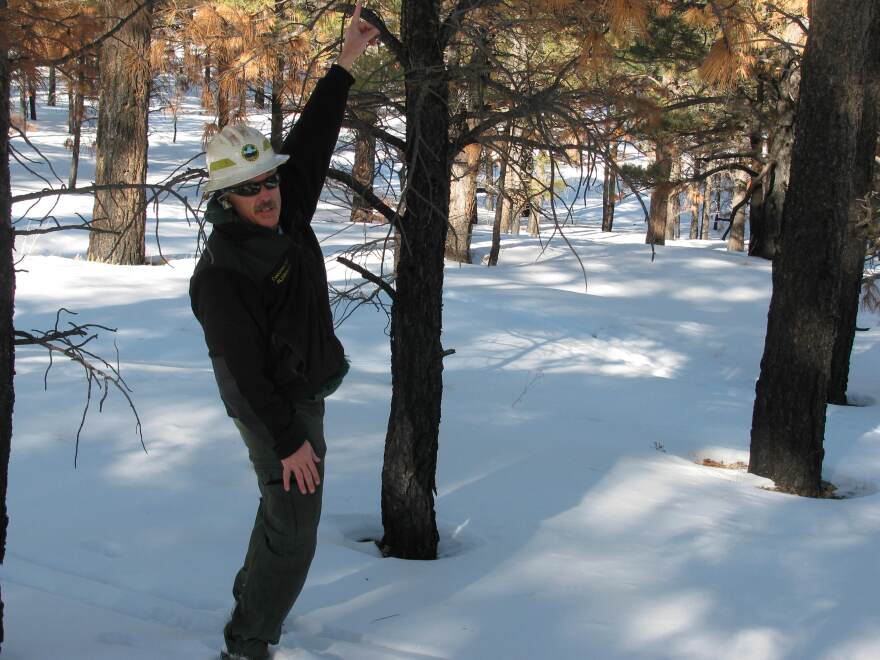By Laurel Morales
http://stream.publicbroadcasting.net/production/mp3/knau/local-knau-945335.mp3
Flagstaff, AZ –
HOST: Last summer fierce winds turned an abandoned campfire into a catastrophic wildfire just outside of Flagstaff. Firefighters saved homes that came within feet of the flames. But no heroic efforts could stop the monsoon rains from pushing rock and ash down the slopes and into people's living rooms. Now that the immediate danger has passed, the community wants to know what's next as the area recovers. From the Changing America Desk in Flagstaff Laurel Morales reports.
When Martin Anaya looks out his window, he sees a dramatically different vista. Instead of the once lush ponderosa and spruce forest that climbed 9-thousand feet over peaks and valleys, he sees charred toothpicks.
ANAYA: I still have some anger. One careless person caused that whole mess. I hope they're not sleeping well at night because the aftermath is going to be for years and we haven't seen the end of it yet. (0:17)
In fact forestry experts say it will take decades for the 15-thousand acres to fully recover.
FLEISHMAN: Let's get out and take a little walk around. (0:03)
Coconino National Forest Soil and Water Specialist Dick Fleishman inspects the burned area, now blanketed in a couple feet of snow. In the short term he says it's important to keep an eye on the rainfall the mountain receives.
SFX: footsteps through snow
FLEISHMAN: We're hoping it's a slow run off if we get run off at all. A rain on snow event would be the worst thing we could possibly get. (0:10)
because Fleishman says a major storm would push the ground that's still unstable down the mountain.
FLEISHMAN: Historically that first year is the bad one. The next year is less and less. But it all depends on storm intensity. (0:08)
In the next few months foresters will also be paying close attention to new vegetation which even in the middle of winter is peaking through the snow.
As soon as the fires were put out last June dozens of helicopters dropped bales of native grass seed and mulch to hold the soil in place.
District Ranger Mike Elson says plants have sprouted where they dropped seeds on the gradual slopes. But grass on the steep slopes didn't take hold.
ELSON: The real concern are the steeper slopes where a lot of the mulch either washed off or blew away. And vegetative recovery has been slower. A lot of the soil was lost and a lot of the seeds we did seed the area a couple times and a lot of the seeds have washed away as well. (0:13)
The southwest is no stranger to wildfire.
About a decade ago the Rodeo Chediski fire burned an area the size of Los Angeles in northeastern Arizona. Today wildflowers and grass grow amidst charred stumps.
People like regional forest service spokeswoman Cathie Schmidlin who track fires in Arizona, Nevada and New Mexico says burned forests won't look the same for a long time, if ever.
SCHMIDLIN: The land does recover; the forest does recover; wildlife does come back. However to say it will be the same is probably not the case. (0:09)
Schmidlin says the severely burned ponderosa on the steep slopes of the San Francisco Peaks in Flagstaff will likely be replaced with fire-hearty aspen.
Resident Martin Anaya says he's looking forward to watching the changing landscape.
ANAYA: We knew there was a risk of that when we first moved out there. Living here all my life I've seen that risk. It's nature's way nature's in control no regrets at all. (0:12)
even if that means more floods and risks of fire in the future.
In Flagstaff I'm Laurel Morales.


